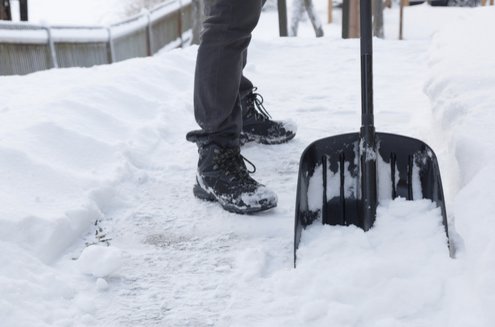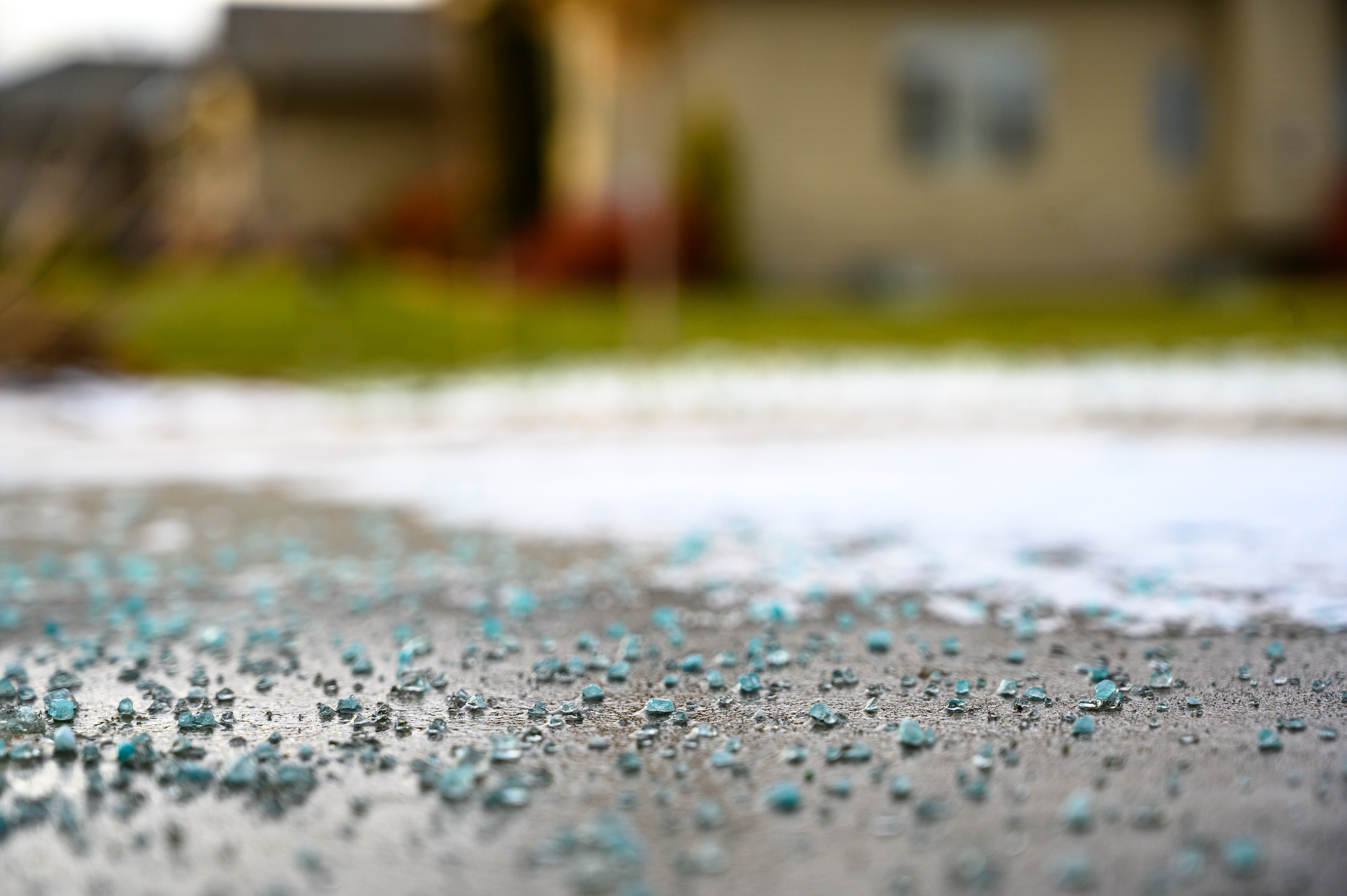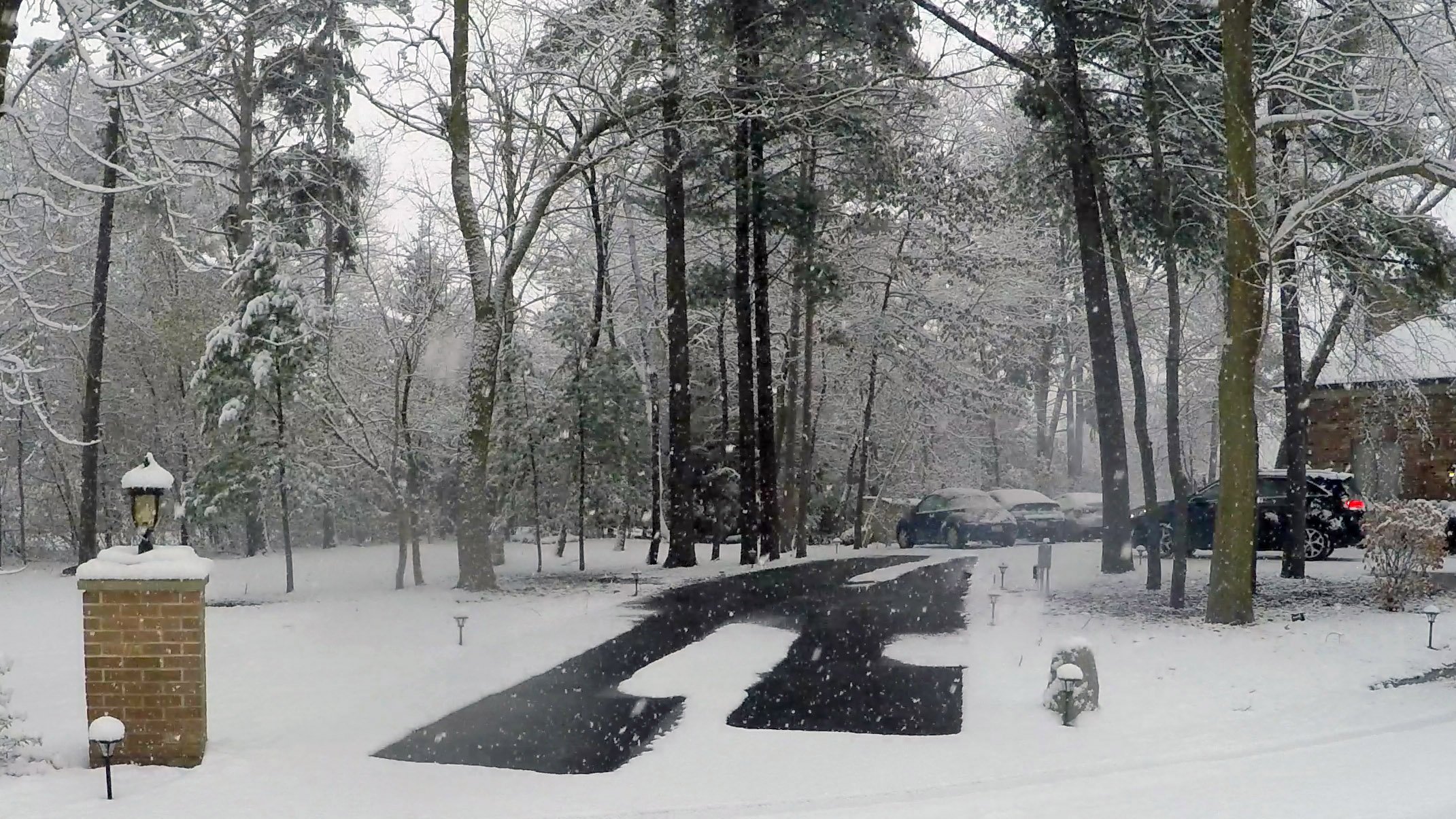Icy driveways are one of the most dangerous side-effects of a snowy winter. Whether your driveway is under several inches of snow or has formed a hazardous sheet of re-frozen black ice by mid-morning, it is necessary to melt the ice before you can safely leave the house. While salt has been the long-standing traditional method for melting ice and providing traction, it also has some serious downsides. Salt is bad for your lawn, dangerous to local animals and small children that might ingest it, and it does long-term damage to your driveway over time.
Anyone who lives in a snowy region is probably familiar with the pitted and unsightly effect of salted pavement on the local roads, and you don't want to do the same to your driveway. Fortunately, there are plenty of alternatives, from traction to prevention to built-in ice removal.
Join us as we explore how to melt ice and snow without salt.
Physical Removal Methods
Most people who don't want to use salt simply address the snow and ice removal directly with a snow shovel. Morning shoveling is good exercise, but it's also hard work, and it leaves a certain amount of risk for ice to re-form over the exposed surface of the driveway. This is why traction materials, such as sand, are also added so that any thin layer of daytime ice is safer to traverse with grit embedded in the ice or light snow.
Shoveling and Scraping
If snow or ice has formed on your driveway before leaving, you'll need to remove it directly. A snow shovel can be used to efficiently pile snow to the side of your driveway, making room for cars and safe walking around your property. If a sheet of ice has formed on your pavement, you'll need a driveway ice scraper instead. This is a stout metal shovel with a smaller head, designed to help you break up the ice so it can be shoveled away in pieces.

Safety Tips
- Shovel snow safely by pushing the shovel instead of lifting it. Your goal is to shift the snow from the driveway to the side. Bend your knees and use the help of your leg muscles, and don't try to lift too much snow at once.
- Break up ice safely by first chipping the ice into smaller pieces with vertical downward strikes. Then you can shovel away pieces once they are broken up.
- Remember to pace yourself, warm up, and hydrate every 5-10 minutes if it is a big task. Snow shoveling can also be dangerous for your cardiovascular health, so make sure to pay careful attention to warning signs from your body while you work.
Traction Materials
Once you have removed the snow and ice from your driveway, add traction materials to ensure all-day safety. Re-melt and fresh snowfall can renew the slipping risk without traction materials to add grip to your driveway.
Kitty litter is a popular choice, but you can also use gravel or sand which embed in the ice and may make it safer to walk or drive on. Traction materials do not help to melt ice, but they can make it easier to break up ice when it comes time to shovel again.
The best way to apply traction material is to sprinkle it evenly over the driveway so that every step crunches evenly beneath your feet.
Useful Tip:
- Only use non-clumping kitty litter. It should be closer to gravel than sawdust in the wide range of kitty litter options.
Chemical Alternatives to Salt
You may be considering deicing options other than salt. Rock salt is harmful to your lawn and dangerous if consumed, but there are other materials that will help ice to melt.

Liquid Deicers
Liquid deicers have become increasingly popular for municipal road management because they spread more evenly than rock salt. Liquid deicers are typically applied using a wide spray.
However, you want to pay close attention, as liquid deicers can have different active ingredients. Some use melted salt solutions, so you're still salting your driveway. Other solutions use a mixture of alcohol (ethylene glycol) instead, similar to your winter-formula windshield wiper fluid that helps keep ice off your windshield when driving.
Liquid deicers work by lowering the freezing point of water, so that it is more difficult for the ice or snow to stay frozen. They melt ice and can prevent re-freezing for a certain amount of time.
Even the salt solutions are less damaging to your pavement than traditional rock salt. You can apply it evenly using a watering can or a pump sprayer.
Exothermic Materials
Exothermic materials are alternative materials that lower the melting temperature of ice so that it melts in colder weather. Common exothermic materials include
- Coffee grounds
- Fertilizer
- Vinegar
- Potassium or Magnesium Chloride
Coffee grounds and fertilizer contain nitrogen, which lowers the melting point of ice, and they can also act as a traction material. Vinegar does the same with acetic acid. Chloride compounds are similar to salt (they are different types of salt) that are less environmentally harmful, and can be used for traction.
Just as with rock salt or liquid deicer, be sure to spread your exothermic materials evenly over the ice to have the desired effect.
Preventive Measures
Of course, you can also take steps to prevent snow and ice from forming on your driveway. Preventative measures can reduce the amount of shoveling or melting needed to keep your driveway clear and safe.
Proper Drainage
First, driveway design is essential. Most driveways are graded to ensure that water runs down, away, and into the neighborhood gutter-drain system. You also need to direct water away from your driveway regarding things like sprinklers, irrigation lines, and the downspouts from your gutters. Keeping your gutters clean can help with this, too.
Proper drainage will prevent water from reaching your driveway and freezing as a dangerous sheet of black ice.
Driveway Coverings
You can also protect your driveway from snow and re-melt using overnight tarps and roll-out melting mats.
Driveway Tarps
To avoid shoveling your driveway in the morning, stake down a tarp over your driveway in the evening before dinner. In the morning, use a careful pull-back technique (machinery can help) to roll the snow off the tarp into a big pile on the side of your driveway.
Melting Mats
Melting mats are also increasingly popular. These are wide mats that are stored rolled up in your garage. In the morning, unroll the mats over your driveway and plug them in. The mats will then heat up and melt snow and ice - ideally before you're done with breakfast. However, you can't leave heating mats on overnight or while you're at work, so they must be deployed and stowed multiple times a day if snow keeps falling or ice reforms.
Safety Tips:
- Be sure to have an efficient place to roll up and stow your tarps or mats - with drainage so they can safely drip and dry without the risk of mold growth if stored wet.
- Don't hurt yourself picking up a snow-laden tarp. Devise a mechanical system to pull up the tarp each morning.
The Ultimate Solution: Heated Driveways
Of course, there is one solution that will ensure that you never have to salt, shovel, gravel, or tarp your driveway ever again: a heated driveway.
How Heated Driveways Work
Heated driveways involve embedding a heating element below the surface of your driveway. Combined with sensors and the proper control, your driveway heating system can automatically warm the driveway once snowfall starts so that snow melts away and ice never forms.
These systems are available in hydronic (water-based) and electric systems. Hydronic systems will generally have less electrical requirements but will also require pumps and relays along with a boiler. Electric systems will need more available amperage per sq. ft. but also require less infrastructure.
An electric snow melting system is connected to your home's electrical supply and works by using the electrical resistance generated by the heating cables to keep the surface they’re embedded in free of snow and ice.

Cost-Effective and Energy-Efficient
Your driveway will never again require hours of shoveling or form dangerous sheets of black ice that put your car and your family at risk. The solution is cost-effective and energy-efficient, requiring very little electricity for many years and enjoying an effortlessly ice-free driveway.
Installing a heated driveway costs less than your average home renovation project, often between $5,000 and $10,000, depending on the size of your driveway and a few installation choices. This should cover both the heating system and the materials and labor for actually installing the heated driveway.
Another cost related concern that people have relates to operating costs for the system itself. However, when you compare it against other snow removal methods like chemical agents or paying someone to shovel, a heated driveway is almost always the more affordable option. Check out our Operating Cost Calculator to get an idea for how much a heated driveway would cost to run in your area.
Discover WarmlyYours Heated Driveways
If you are looking for a permanent, safe solution to preventing ice on your driveway, WarmlyYours heated driveways are the ideal answer. The system will ensure that your driveway is completely safe from snow build-up and ice formation with a self-maintaining control system. Learn more about heated driveways and contact us for a free quote based on the size, material, and your personal preferences for heated driveway installation.
FAQS
Here are some of the most common questions we get about this topic.
Is salt bad for driveways?
Yes. Salt will cause pavement corrosion over time. The run-off is also bad for plants, and rock salt is dangerous if ingested by children or neighborhood animals.
How long does it take for alternative methods to work?
Unlike with electric heated driveways, it generally takes over an hour for alternative methods like coffee grounds to start to noticeably melt ice. They increase the melting rate, but do not instantly cause ice or snow to melt.
Are heated driveways difficult to install?
No. Electric heated driveways involve installing heating cable below the pavement. As long as the driveway is being replaced or installed for the first time, installing a heated driveway system shouldn’t significantly complicate the installation.
What maintenance is required for heated driveways?
Heated driveways are practically maintenance-free. Below the surface of your driveway, the heated cable is perfectly safe and the electrical components last for many years with little to no maintenance requirements.

Keeping Your Driveway Ice-Free, the Easy Way
There are many ways to remove ice and snow from your driveway. You can shovel daily, constantly roll and unroll tarps and mats, try melt-enhancing materials, or you can invest in a long-term and effortless solution. Heated driveways are efficient in terms of both electrical and human energy. They will save you hundreds of hours in shoveling and driveway maintenance with little-to-no effort required to maintain the system.
WarmlyYours is excited to bring you the best in driveway heating technology with swift and affordable installation services. Curious about how much a snow-melting system would cost for your driveway? Use our Quote Builder to find out!




